The States Where Natural Disasters Strike Most Often

It's a question raised by Americans thinking about retiring or relocating: Where can I go where I won't have to worry about disasters like hurricanes, earthquakes, tornadoes or wildfires?
Here's an answer: Not any of the states on this list.
Though no place is completely safe, these states get hit by nature more than others. They're the ones where presidents have declared the most major disasters.
We've looked at Federal Emergency Management Agency (FEMA) records that go back 66 years and were current as of late May 2019. If you live in one of these states, make sure you have enough insurance — and good emergency savings, just in case.
25. (tie) Nebraska
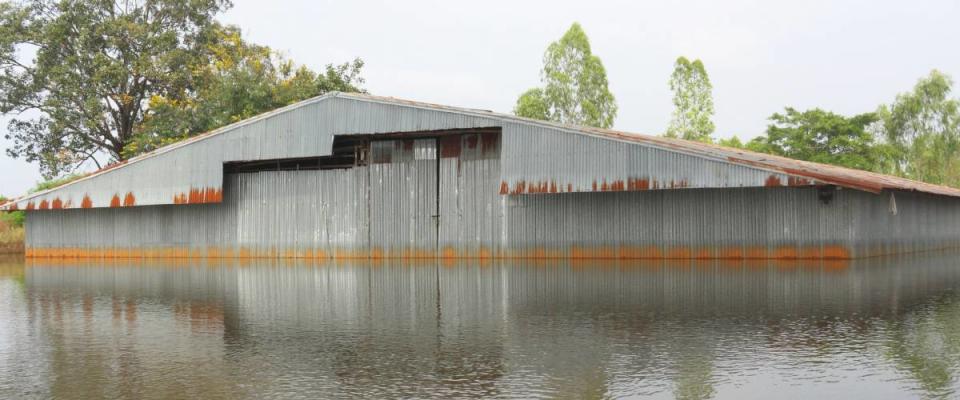
Nebraska deals with catastrophic flooding nearly every year.
Major disasters since 1953: 65
Its central U.S. location means Nebraska endures severe weather coming from all directions, and during every season.
Disasters have been declared in the Cornhusker State due to winter snow and ice storms, spring tornadoes, summer fires, and flooding virtually any time of year.
A major flood on the Missouri River in 2011 swamped Nebraska's Fort Calhoun nuclear plant and contributed to knocking it out of service for more than two and a half years. But there was never any radioactivity danger, officials said.
25. (tie) South Dakota

A storm approaches Mount Rushmore.
Major disasters since 1953: 65
The Mount Rushmore State can be a stew of severe storms, flooding, blizzards and fires.
A December 2017 fire burned 84 square miles, making it the third-largest to ever hit South Dakota's Black Hills region. Investigators determined that the Legion Lake Fire in Custer State Park started when a windstorm blew down a tree, which hit a power line.
Another disaster was declared over a 2018 fire that ravaged 560 acres near Hot Springs, South Dakota. Authorities think the Vineyard Fire was started by a teenager playing with a flare gun.
22. (tie) Georgia
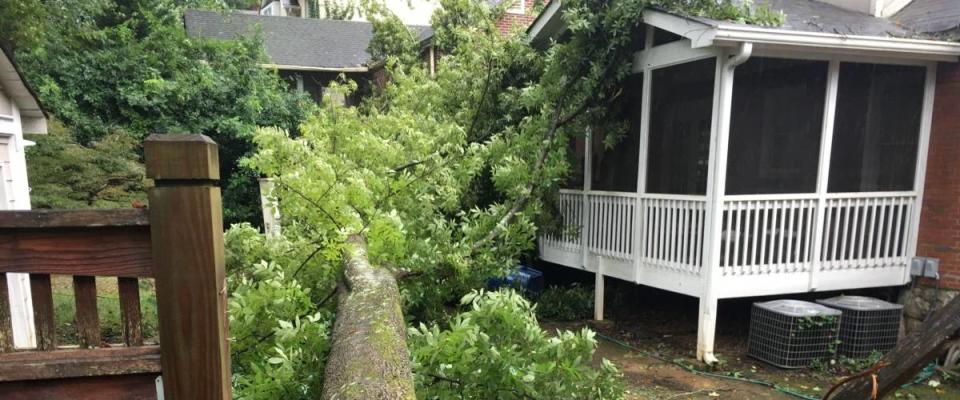
High winds from Hurricane Irma knocked down trees in Atlanta.
Major disasters since 1953: 67
Georgia is far enough south and close enough to the coast that it's frequently battered by hurricanes, or what's left of them.
In 2017, winds left over from Hurricane Irma swept through the state, causing widespread power outages and killing three people. In 2005, Hurricane Katrina spawned 18 tornadoes in Georgia. One person died.
But the state isn't too far south for snow. Remember the 2014 Snowpocalypse in Atlanta? The highways got so jammed that thousands of people either abandoned their cars or slept in them overnight.
22. (tie) Iowa
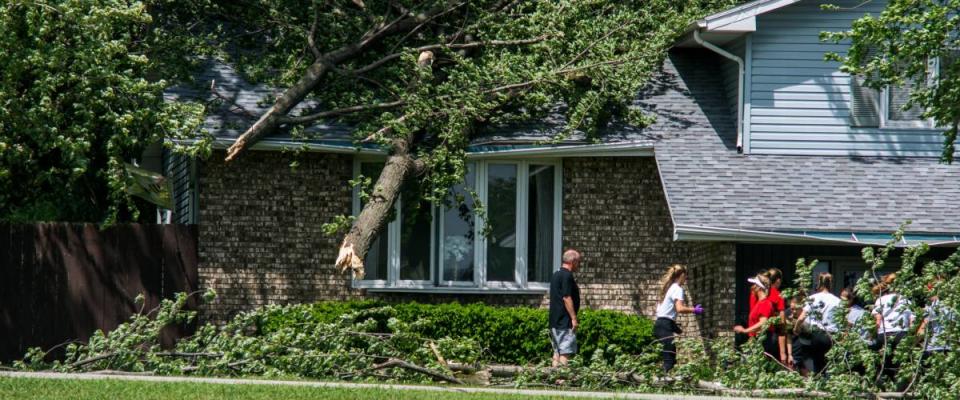
A tree fell on this house in Fort Dodge, Iowa, during a severe storm in 2017.
Major disasters since 1953: 67
Iowa is another state that sees more than its share of floods, including one in 2008 that pushed the Cedar River in Cedar Rapids to its highest level on record. Floodwaters covered more than 10 square miles and displaced 10,000 people.
The National Weather Service says Iowa also averages 46 tornadoes per year, though 2017 was one of the busier years, with 55 twisters.
Other storms tear through the Hawkeye State with combinations of high straight-line winds, hail, ice and snow. A Halloween blizzard in 1991 destroyed up to $5 million worth of corn still in the fields.
22. (tie) Virginia
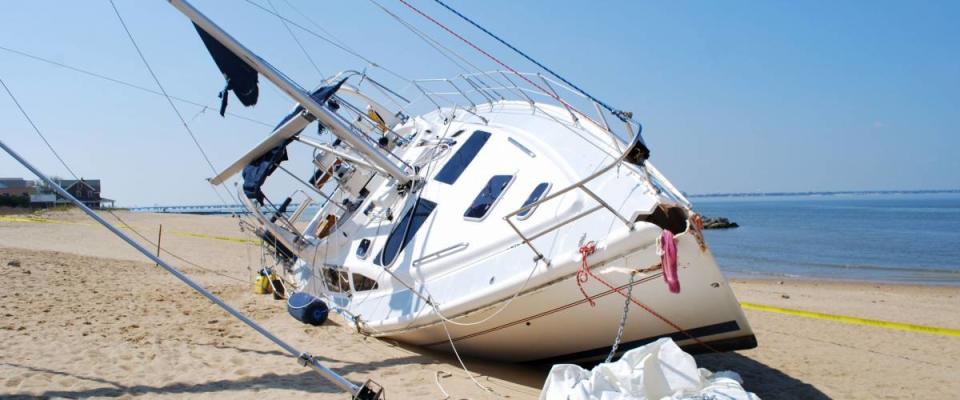
Boats in Norfolk were left damaged when Hurricane Irene whipped Virginia in 2011.
Major disasters since 1953: 67
Virginia's got mountains, beaches and a lot of woods in between — and you can bet that it gets a wide variety of weather, too.
Presidents have issued disaster declarations over floods, fires, blizzards, droughts and more than a dozen hurricanes, including 2011's Hurricane Irene that wrecked boats near the coast.
But one of the state's more unusual and powerful natural disasters was a 2011 earthquake centered northwest of Richmond. Across the Potomac in Washington, D.C., the Washington Monument was closed for three years because of damage from the 5.8-magnitude quake.
19. (tie) Missouri

Tornadoes are just one common natural threat in Missouri.
Major disasters since 1953: 70
Tornadoes, flooding, ice storms, snowstorms, fires, drought — they've all shown up in the Show-Me State. Missouri's location smack in the center of the country means it gets practically every kind of weather.
One of the state's worst disasters on record was the Mississippi River Great Flood of 1993. Floodwaters swamped parts of St. Louis and climbed halfway up the grand staircase leading to the iconic Gateway Arch.
Floods can occur practically anywhere in the U.S., and here's an important reminder: They're one of the hazards not covered by standard home insurance, so you need government flood insurance to cover flood risks.
19. (tie) Tennessee
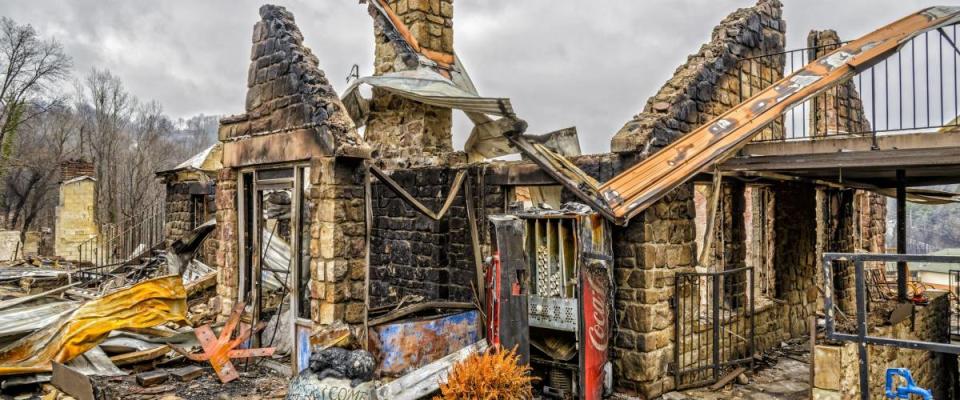
This motel was destroyed by the Great Smoky Mountains fire of 2016.
Major disasters since 1953: 70
Tennessee is called the Volunteer State — and that spirit of volunteerism is most appreciated after the disastrous weather that often whips the state.
Severe storms accompanied by tornadoes, flooding and even ice have often reached disaster status in Tennessee. Major wildfires have been rarer, though they've been a big source of trouble some years.
In 2016, there were five separate disaster declarations over fires. Late that year, a fire in Great Smoky Mountains National Park killed at least 14 people and threatened Dolly Parton's Dollywood theme park in Pigeon Forge.
19. (tie) West Virginia
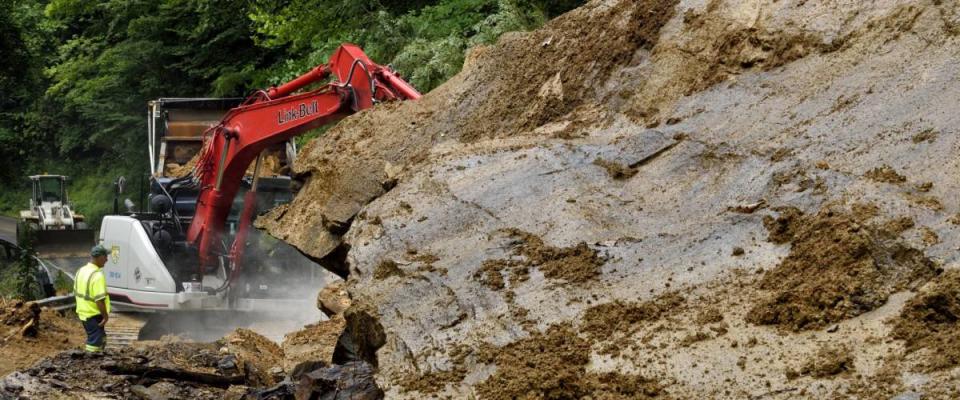
Crews had to use heavy equipment to reopen a West Virginia highway closed by a flashflood and mudslide in 2015.
Major disasters since 1953: 70
Flooding and mudslides can be catastrophic in the Mountain State, particularly when storms dump rain in the hills and send water flowing into the populated valleys.
Epic floods in June 2016 killed more than two dozen people after as much as a foot of rain fell on parts of West Virginia in a matter of hours.
While floods and storms are the most common disasters in West Virginia, the state also has dealt with severe snows, fires and droughts, as well as remnants of a couple of hurricanes moving north.
17. (tie) Arkansas
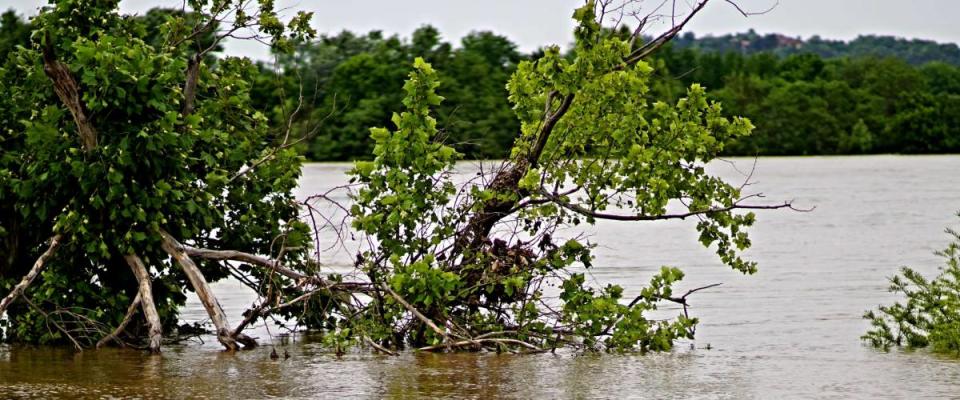
Floods often take a toll on Arkansas.
Major disasters since 1953: 71
Though it's inland, Arkansas is no stranger to hurricanes. They occasionally sweep up from the Gulf of Mexico and cause various kinds of trouble in the state that gave us Walmart and President Bill Clinton.
In 2008, disasters were declared in Arkansas due to flooding and damage brought by Hurricane Gustav and Tropical Storm Ike. The state also experienced some flooding and tornadoes from Hurricane Harvey in 2017.
But more typical Arkansas disasters include severe thunder-and-lightning storms, tornadoes, major ice storms, and floods from heavy rain.
17. (tie) Montana
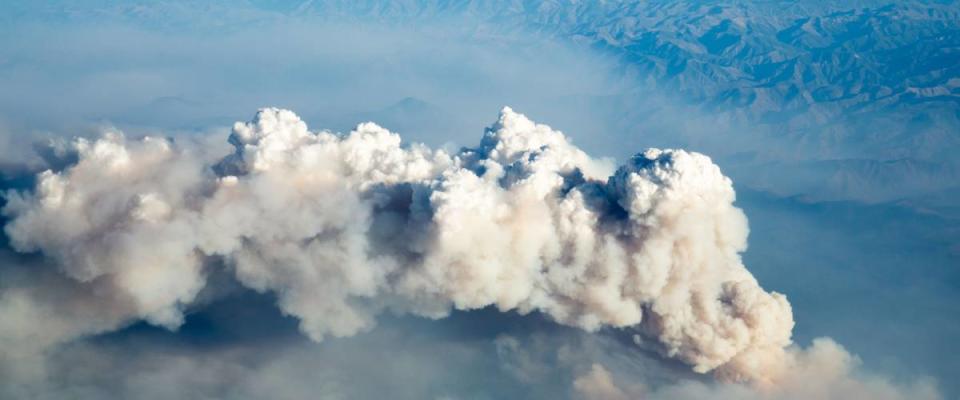
Fires are the most frequent source of disaster declarations in Montana, particularly during summer.
Major disasters since 1953: 71
Fires have been the cause of more than half the disasters declared in this woodsy and mountainous state. A record 2,134 square miles burned in Montana in 2017.
But what's still regarded as the worst natural catastrophe in the state's history was a 1964 flood on the Blackfeet Indian reservation.
At least 30 people died in the flooding, caused by torrential rains. An area spanning nearly 30,000 square miles — roughly 20% of this massive state — was inundated, according to the Montana Historical Society.
16. Kansas
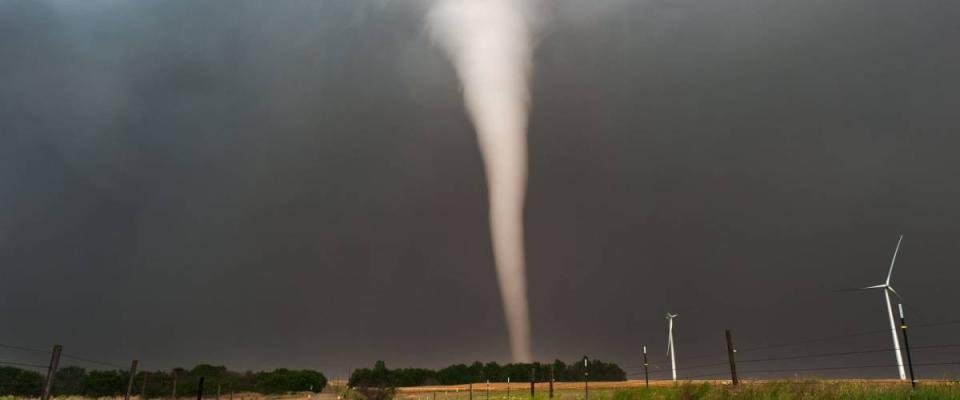
Kansas tornadoes aren't just something out of The Wizard of Oz.
Major disasters since 1953: 72
Violent weather in Kansas isn't just the stuff of The Wizard of Oz. Over the decades, the Sunflower State has been hit by dozens of disasters, typically severe storms combining tornadoes with heavy rain and flooding.
One of the worst Kansas twisters in history struck the suburbs around Wichita in April 1991. Seventeen people died in the tornado, which was a half-mile wide, had winds that topped 260 mph, and did $300 million in damage.
FEMA says other Kansas catastrophes have included wildfires, ice storms and severe snowstorms. If you live in one of these disaster-ridden states and don't have an emegency fund, you'll want to start saving ASAP.
15. Arizona
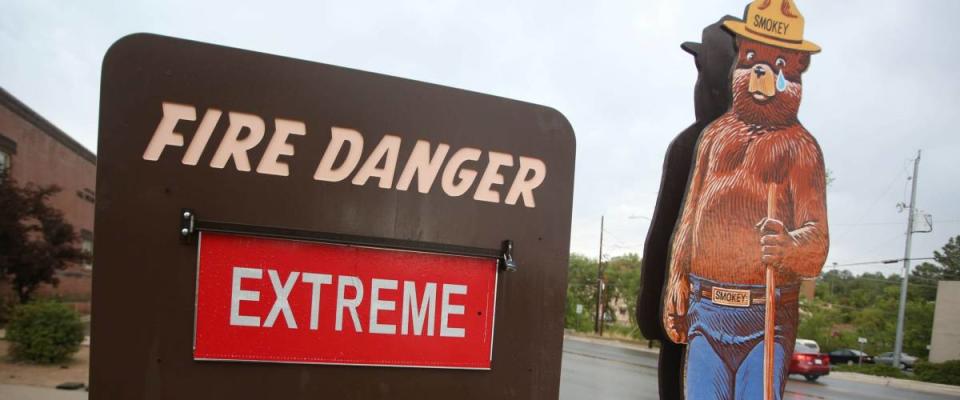
Hot, dry conditions make fires a persistent threat in Arizona.
Major disasters since 1953: 73
They don't call it "Aridzona" for nothing. America's 48th state is known for being hot and dry — which is the perfect combination for fires. The state was scorched by more than 2,300 during 2017 alone.
More than half of Arizona's declared disasters have involved fires. The largest ever was the Wallow fire in 2011 that consumed more than 816 square miles in the state, an area more than half the size of Rhode Island.
The state does get rain — sometimes too much of it. Fourteen Arizona floods have reached the level of a disaster in recent decades.
13. (tie) Nevada
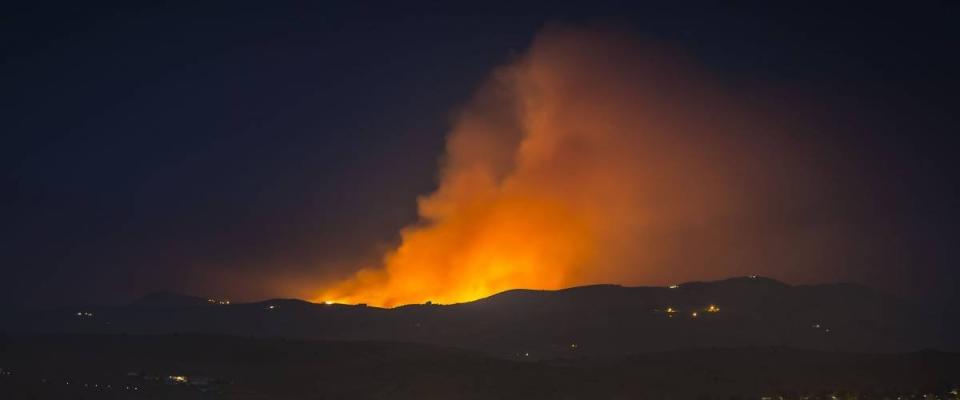
Nevada's dry weather means wildfires are a frequent problem.
Major disasters since 1953: 74
Things can get very hot in Nevada — and we're not talking about summertime temperatures or Las Vegas strippers. Devastating wildfires have been the cause of well over half the state's disaster declarations.
Officials said the 2017 fire season was the worst in over 10 years and torched more than 1.3 million acres.
Nevada also has been battered by floods, snowstorms, drought and earthquakes. Twin quakes in 1954 had magnitudes of 7.3 and 7.1, according to the Online Nevada Encyclopedia, and damaged not only roads but also the Nevada Capitol building in Carson City.
Like floods, earthquakes are excluded by standard home insurance. Homeowners need special coverage for quake risks.
13. (tie) Mississippi
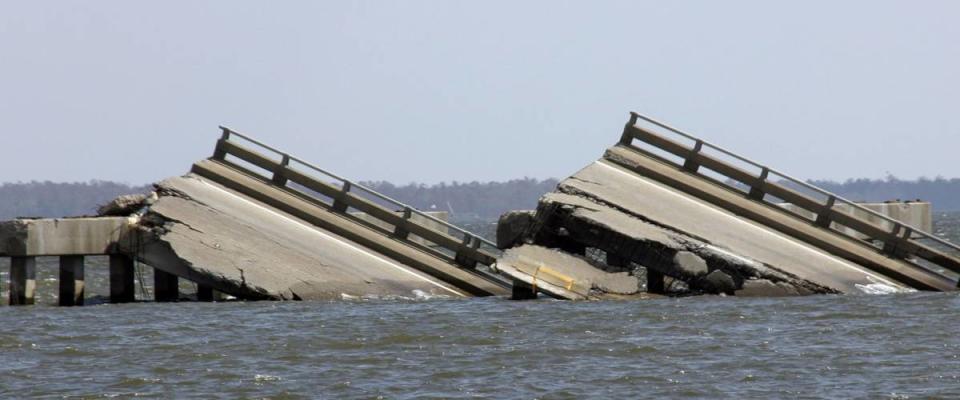
Hurricane Katrina brought down this bridge in Biloxi, Mississippi.
Major disasters since 1953: 74
This state on the Gulf of Mexico has been pummeled by no fewer than 17 hurricanes over the last 65 years.
The worst was 1969's Hurricane Camille, a rare Category 5 similar to Hurricane Andrew, the one that tore up the Miami area in 1992.
Camille's more than 200 mph winds were blamed for 141 deaths along the Mississippi coast and over $1.4 billion in total damage. At least 30 people were killed celebrating the storm in "hurricane parties" near the shore.
Other Mississippi disaster declarations have involved severe storms, tornadoes, floods, and a freak southern ice storm in December 1998.
12. Kentucky
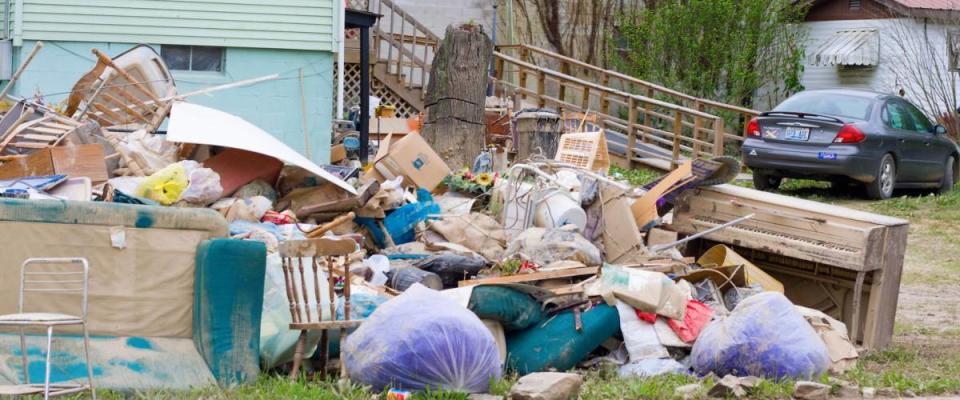
Eastern Kentucky has seen damage from floods again and again and again.
Major disasters since 1953: 77
Like Kentucky Derby fans who go to the betting windows year after year but never win any money, some areas of the Bluegrass State are terribly unlucky.
The New York Times recently reported that eastern Kentucky is one of the regions of the U.S. most often struck by disasters. The community of Grayson has been hit by costly storms and flooding nine times in the last 16 years!
FEMA says Kentucky's most disaster-prone month happens to be Derby month, May. The state has seen May floods, tornadoes, mudslides, landslides and rockslides.
Want more MoneyWise? Sign up for our newsletter.
11. Louisiana
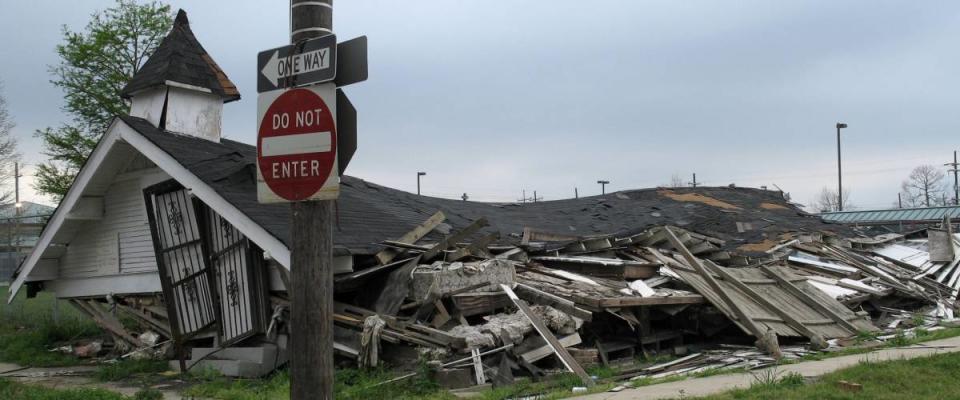
Louisiana faced a long recovery from Hurricane Katrina.
Major disasters since 1953: 79
Since 2005, disaster in Louisiana has meant one word: Katrina.
The state is still recovering from the costliest and one of the deadliest hurricanes the U.S. has ever seen.
It slammed into Louisiana with 140 mph winds and a storm surge of up to 30 feet. The horrific toll inflicted on the state included nearly 1,600 deaths and $25.9 billion in insured losses, according to FEMA.
Because of Louisiana's location on the Gulf Coast, hurricanes have become an unfortunate habit. Katrina is just one of 26 that have given the state disastrous poundings over the decades.
10. Colorado
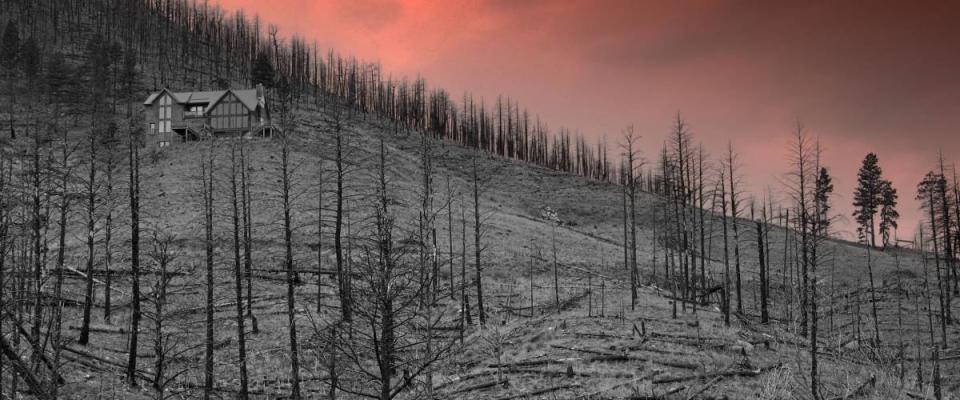
Colorado's terrain and vegetation make wildfires a regular threat.
Major disasters since 1953: 83
Colorado is another western state where fires are a major and regular threat. According to property inspection firm HIE, Colorado is a magnet for fires because of its dry climate, thick vegetation, and mountain peaks that are like lightning rods.
The 2002 Hayman fire in Pike National Forest is regarded as the worst wildfire Colorado has ever seen. It scorched over 137,000 acres, burned 133 homes and killed six people, including five firefighters.
Other Colorado disasters have included floods, droughts and a pair of December blizzards in 2006 that cost the federal government nearly $10 million in disaster assistance. Denver was shut down by 2 1/2 feet of snow.
8. (tie) New Mexico
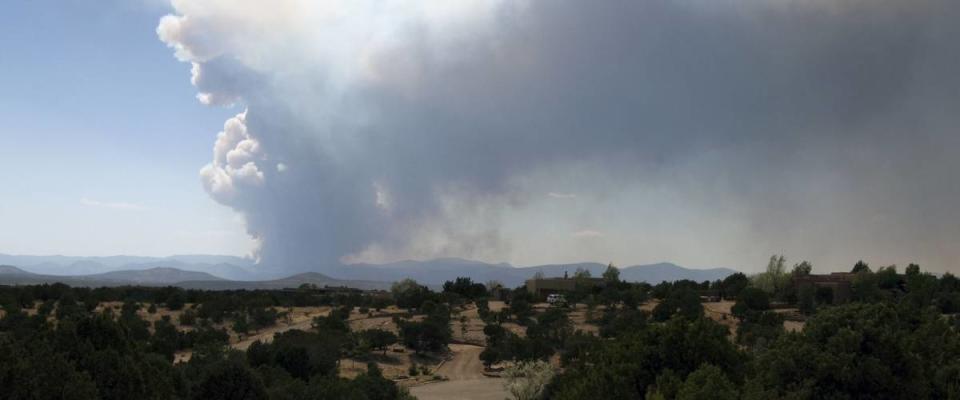
New Mexico's fire season stretches on for months.
Major disasters since 1953: 86
In some states, hurricane season is a thing. In others, spring is thought of as flood season. In New Mexico, there's a fire season, which tends to start in May or June and last until fall.
More than half the time a disaster is declared in New Mexico, it's because of a forest or brush fire. The worst ever was the Whitewater-Baldy fire in 2012, which burned an estimated 465 square miles — about double the size of Chicago!
New Mexico has seen not only the extremely dry conditions that lead to fires but also monsoon-style rains that have caused flooding and mudslides.
8. (tie) Oregon
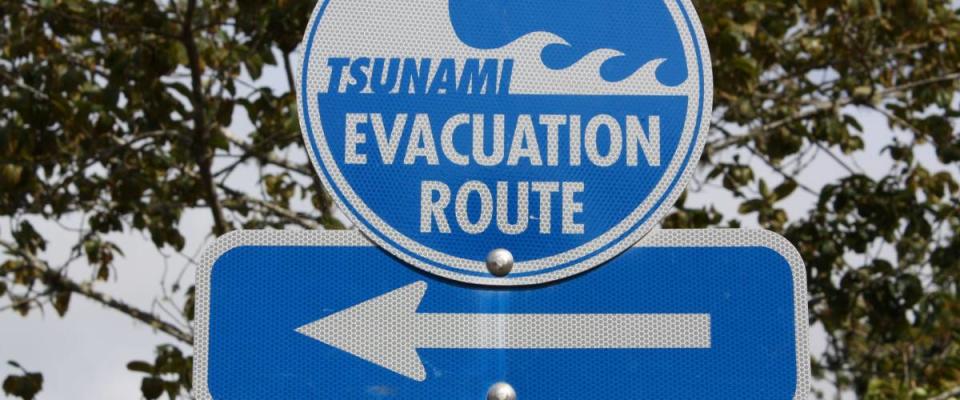
Tsunamis are a hazard along the Oregon coast.
Major disasters since 1953: 86
The Great Northwest is a land of natural beauty — and natural threats. Oregonians have had to deal with destructive fires, floods, mudslides, snowstorms, drought, earthquakes and even a tsunami.
A 2011 earthquake and tsunami in Japan sent shockwaves across the Pacific to the Oregon coast, where high waves damaged docks and left boats stacked on top of one another. Several boats sank or were washed out to sea.
The Oregonian newspaper in Portland reported that two men were hurt when they were swept off a beach, and one man may have died. Federal disaster assistance for tsunami victims totaled $5.6 million.
7. Alabama
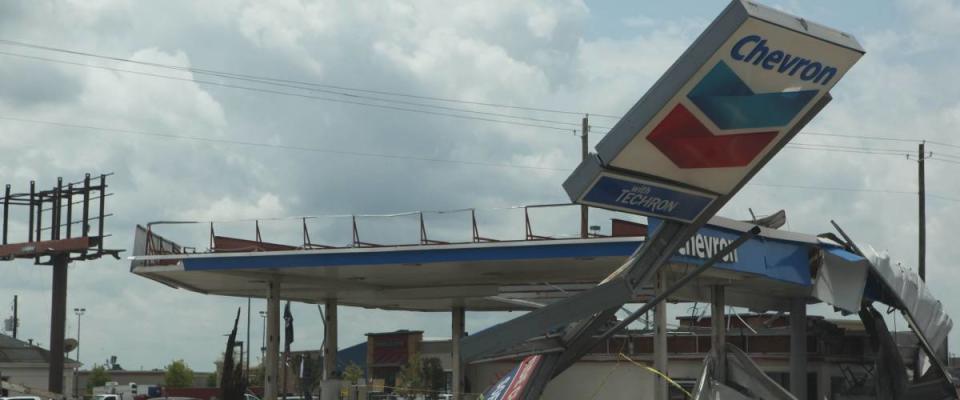
This gas station was mangled in the tornadoes that struck Alabama during April 2011.
Major disasters since 1953: 87
Thanks to its location on the Gulf Coast, Alabama has found itself in the bullseye of catastrophic hurricanes far too many times.
Nineteen have led to Alabama disaster declarations, including several that have become household names: Katrina, Irma, Camille. But none of those is considered the worst calamity to ever hit the state.
That distinction goes to an outbreak of 62 tornadoes that struck Alabama over four days in April 2011. The most powerful cut a 25-mile path with 210 mph winds. Nearly 240 people were killed, and around 2,000 were injured.
6. New York
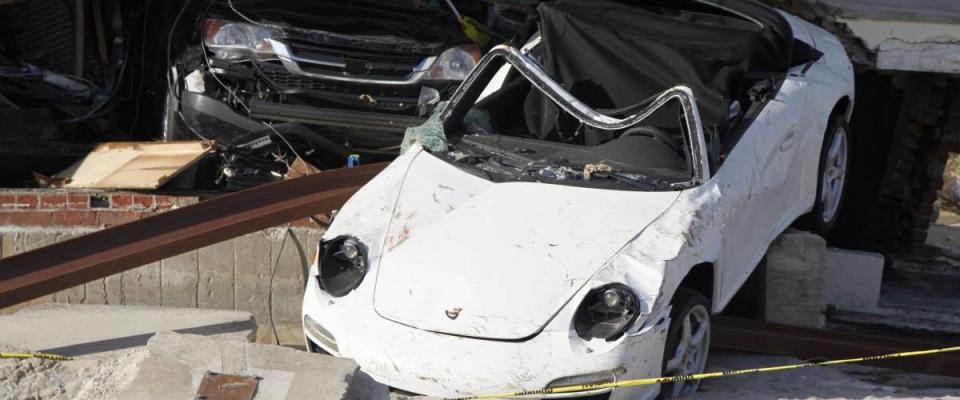
Hurricane Sandy was the worst storm to hit the New York City area in modern times.
Major disasters since 1953: 96
The Empire State stretches from the Great Lakes to the East Coast, with farm country and mountains in between. Given its mix of climates and terrain, New York faces a variety of disaster threats, too.
Presidents have declared disasters in New York because of: floods; blizzards; tornadoes; fires; ice storms; a 2002 earthquake that wrecked roads and chimneys; and a dozen hurricanes.
Hurricane Sandy in 2012 was the worst storm to hit the New York City area in modern times. It closed stock exchanges, left more than 8 million without power, swamped subway stations and caused an estimated $50 billion in damage.
5. Florida
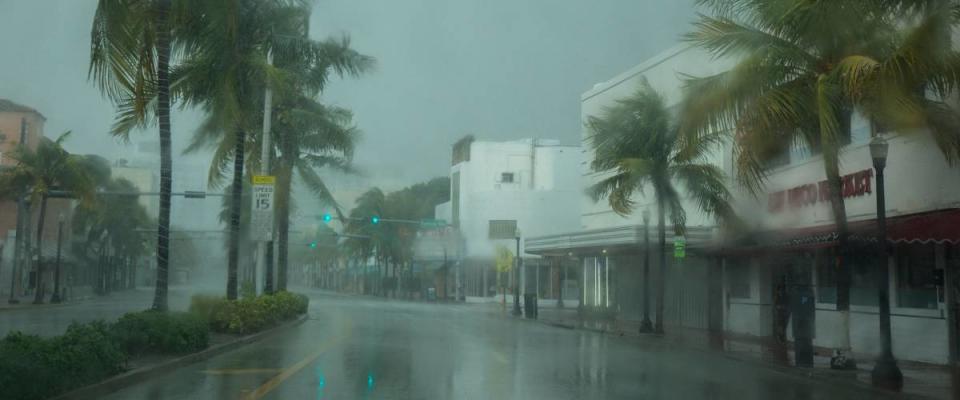
Hurricane Irma took a toll on Miami Beach.
Major disasters since 1953: 132
The way Florida dangles there on a map, at the northern edge of the Caribbean, you'd probably assume hurricanes are the top danger for the Sunshine State. But you'd be wrong.
Florida has seen more disaster declarations from fires (45) than from hurricanes (41). April and May are the peak fire danger months, coming off the winter dry season. In April 2017, more than 115 wildfires were burning at one time.
But that's not to dismiss the threat from hurricanes. Hurricane Irma in 2017 led to mass evacuations, and 2018's Hurricane Michael was a Category 5 storm that devastated the Florida Panhandle and required at least $1.2 billion in federal disaster relief.
4. Washington
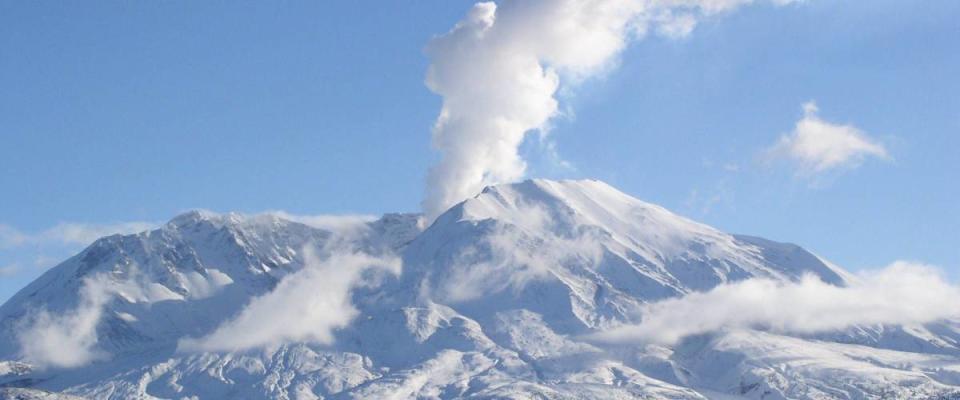
Washington state's Mount St. Helens volcano killed 57 people when it erupted in 1980.
Major disasters since 1953: 147
Though Washington is known for its lush, green forests, the state does have its dry spells — which have resulted in devastating forest fires every year since 2000.
The 2017 fire season was called one of the worst on record and destroyed hundreds of thousands of acres.
Washington also has endured floods, mudslides, landslides, earthquakes — and an infamous volcano eruption.
When Mount St. Helens blew its top in 1980, 230 square miles of forest were scorched, 200 homes were destroyed, 900,000 tons of volcanic ash buried roads, an estimated 7,000 large game animals were killed, and 57 people died.
3. Oklahoma
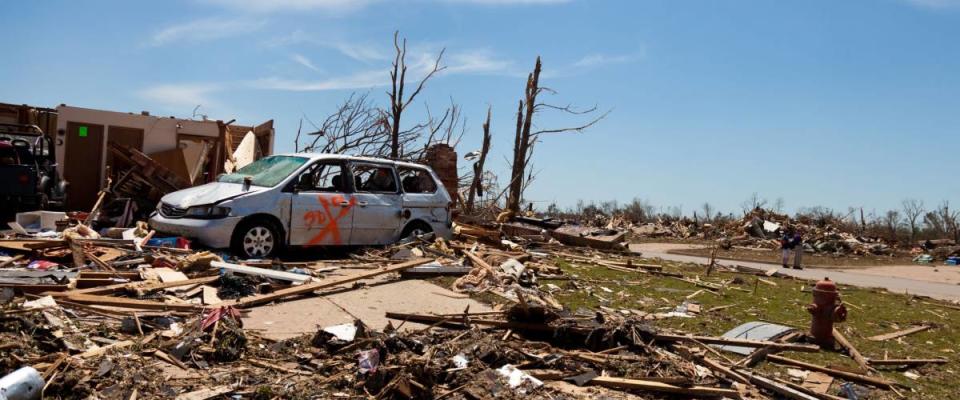
A powerful 2013 tornado demolished the town of Moore, Oklahoma.
Major disasters since 1953: 178
Though it's a midsize state — ranked 27th by population and 20th for area — Oklahoma is near the top as a disaster zone.
Most of it lies within the central U.S. "Tornado Alley," so the state is plagued by twisters. One of the worst was the Moore tornado in 2013, which killed 24 people and caused an estimated $2 billion in damage with 210 mph winds.
Oklahoma also endures wildfires, floods and severe winter storms. Nine ice storms have been bad enough to bring about presidential disaster declarations.
2. Texas

Hurricane Harvey put the Houston area under water.
Major disasters since 1953: 263
The disaster risks in Texas are as big as the state's reputation. The sprawling Lone Star State takes beatings from fires, floods, tornadoes, hail, winter storms and — let's not forget — hurricanes.
FEMA officials have said that 2017's Hurricane Harvey would likely go down as the worst natural disaster Texas has ever seen.
The storm dumped more than 4 feet of rain on Houston, leading to historic flooding that sent homeowners rushing out to their rooftops to escape the rising water. Officials said the storm cost 88 lives and $125 billion in damage.
1. California
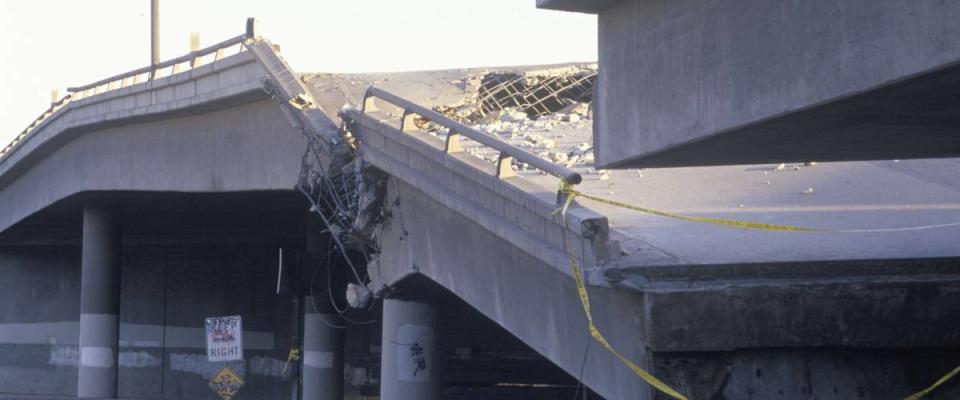
The Northridge earthquake was destructive and expensive.
Major disasters since 1953: 305
America's most populous state also is the most disaster-prone, according to FEMA data.
California is often associated with earthquakes. The state has seen a dozen disastrous ones over the last 66 years, including the 1994 Northridge quake, the costliest in U.S. history. Fifty-seven people died, and more than $20 billion in damage was done.
But a far more frequent threat in California is wildfires, which get more destructive every year. The 2018 fire season is considered the worst in the state's history.
More than 8,500 fires burned an area larger than the state of Delaware. More than 100 people were killed and 17,000 homes and 700 business were lost.

 Yahoo News
Yahoo News 